CANADIAN PETROLEUM PRODUCERS ASSOC.
GO SITE - C - ING
A “Load” of Baloney
In a recent May 25, 2010 delegation
before Ft. St. J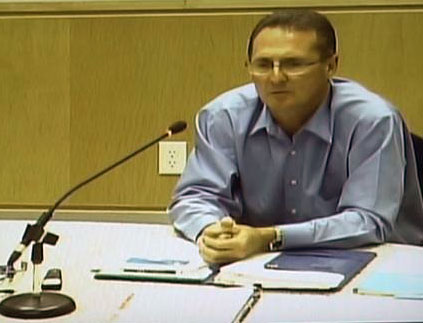 ohn City
Council, David Conway, B.C. Hydro’s Site-C Community Relations Manager,
stated
that the proposed $6.6 billion dam, to be built on the Peace River near
the western
outskirts of
ohn City
Council, David Conway, B.C. Hydro’s Site-C Community Relations Manager,
stated
that the proposed $6.6 billion dam, to be built on the Peace River near
the western
outskirts of
Why is it that we are looking at Site C? The growth in regards to load is expected or forecast to be between 20 and 40 percent.... The province’s population is expected to grow substantially over that period of time, and we are looking at emerging trends such as electric vehicles which could really change the load for us. (Audio transcript)
Most British Columbians may be under the grandiose impression that the B.C. Liberal administration’s pressing and hasty proposal for the Site-C dam is intended for the sole benefit of BC public’s overall interest and use. Nothing, apparently, could be further from the truth.
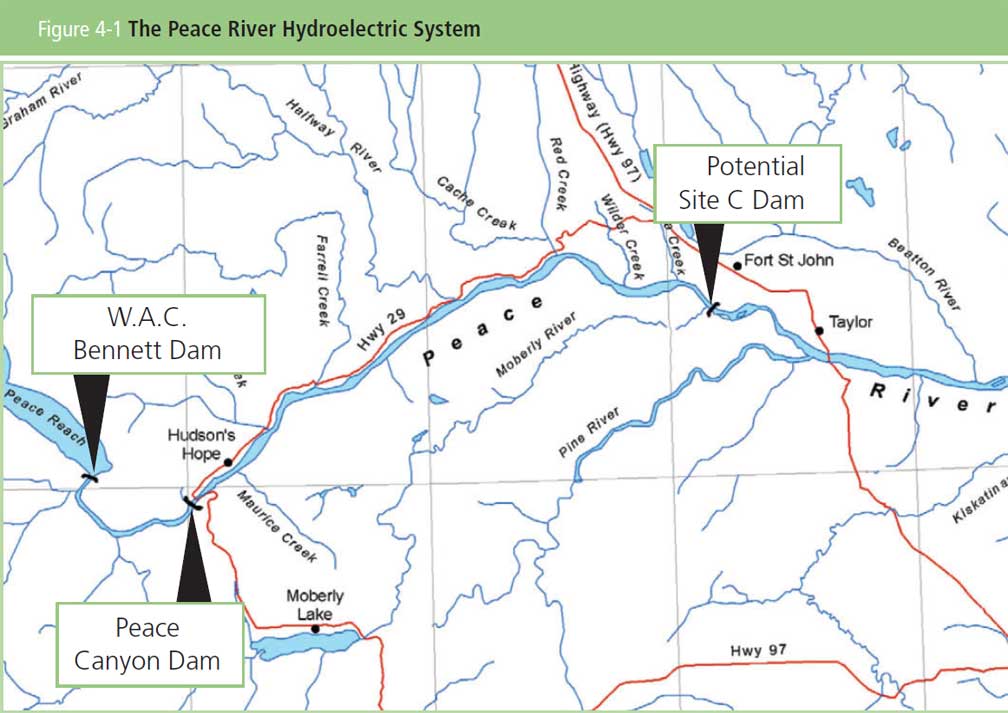
The Canadian Association of Petroleum Producers
Whatever the original intentions that
may or may not have
been to resurrect construction of the controversial Site-C dam as
directed by the
BC Liberal Cabinet to BC Hydro when it filed an application with the BC
Utilities Commission near April Fools Day, 2004, it has since become
crystal clear
that Site-C is primarily aimed to benefit and support the natural gas
industry
operations near the Fort Nelson area, and as a new artery for other in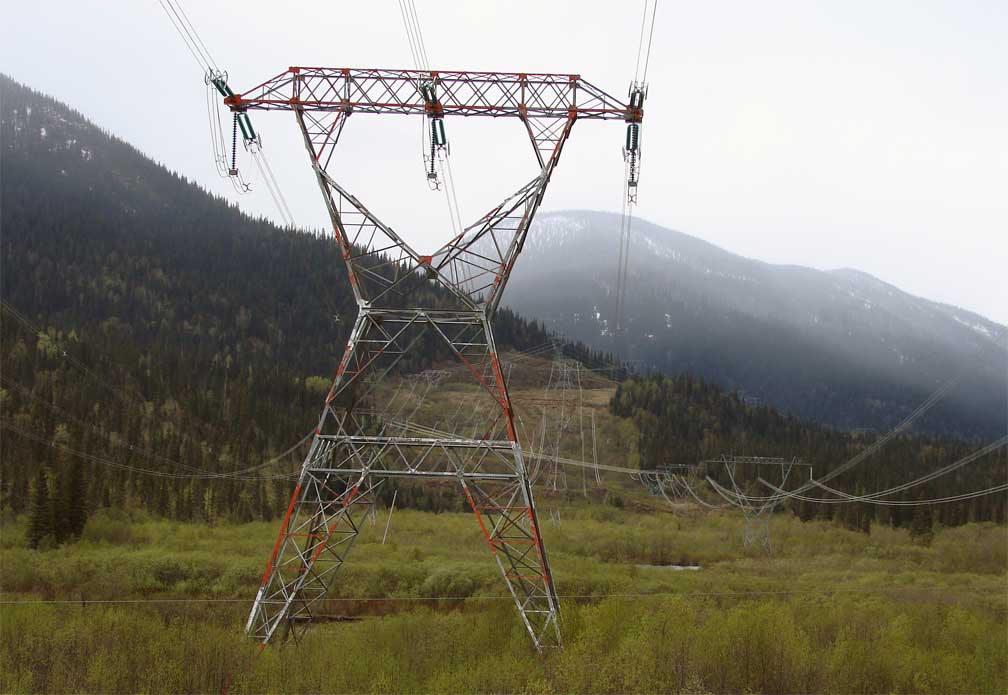 dustry in
BC’s northwest. The major Fort Nelson area exploration and production
gas companies,
identified as the Horn River Producers Group, not only desire about 500
megawatts from the total proposed 900 megawatts from Site C, they also
want B.C.
Hydro (the public) to fund a new $300 million transmission line. The
construction of Site-C and the proposed transmission line costs add up
to about
$7 billion ‘gift’ from the public.
dustry in
BC’s northwest. The major Fort Nelson area exploration and production
gas companies,
identified as the Horn River Producers Group, not only desire about 500
megawatts from the total proposed 900 megawatts from Site C, they also
want B.C.
Hydro (the public) to fund a new $300 million transmission line. The
construction of Site-C and the proposed transmission line costs add up
to about
$7 billion ‘gift’ from the public.
It is not known how long the Horn River Producers Group may have hatched this scheme with or without the special aid of the B.C. Liberals, but what is known is that the Group of corporations finally let the cat out the bag in December, 2008.
In a December 15, 2008, 10-page
submission included in B.C.  Hydro’s 2008 Long-Term
Acquisition Plan
Application (Evidentiary Update,
December 22, 2008), the Canadian Association of Petroleum Producers
(CAPP),
acting on behalf of the Horn River Producers Group, presented a
detailed request
for up to 550 megawatts of power for the Horn River Basin area near
Fort
Nelson. Brad Herald, one of CAPP’s Canadian lobbyists, and CAPP’s
designated manager
of British Columbia Operations, was signatory to the submission:
Hydro’s 2008 Long-Term
Acquisition Plan
Application (Evidentiary Update,
December 22, 2008), the Canadian Association of Petroleum Producers
(CAPP),
acting on behalf of the Horn River Producers Group, presented a
detailed request
for up to 550 megawatts of power for the Horn River Basin area near
Fort
Nelson. Brad Herald, one of CAPP’s Canadian lobbyists, and CAPP’s
designated manager
of British Columbia Operations, was signatory to the submission:
The
potential exists for
significant electric load growth in the greater
The electrification of HRB field compression and Carbon Capture and Sequestration (CCS) compression at the Cabin Plant and area processing plants are major opportunities to abate GHG emissions. The potential exists to reduce cumulative emissions of some 100 Megatonnes via electrification and CCS from this play by the year 2030. The range of electric load potential of ~ 100 – 350 MW exists based principally on the timing of electrification.
The Horn
River Basin Shale Gas play
has developed over the last three to four years.
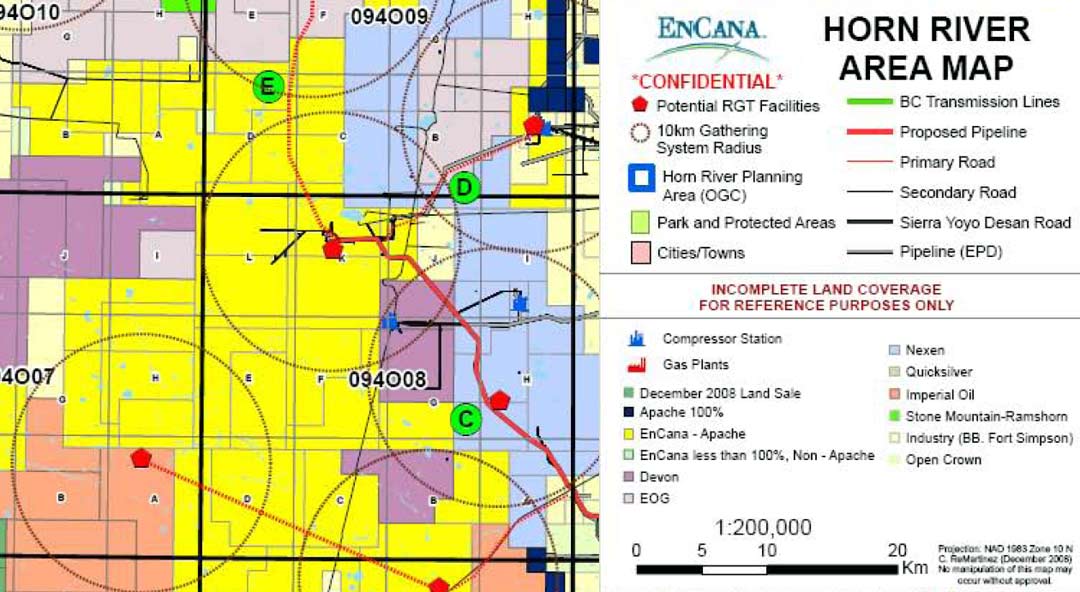
The majority of the tenure is held by a group of eight Operators who have formed a producers association named the Horn River Producers Group (HRPG). The charter of the HRPG is to work cooperatively to facilitate the orderly development of the resource.
The
Canadian Association of
Petroleum Producers (CAPP), through its Oil & Gas Sector Table
established
by the B.C. government, have been working with the B.C. Ministry of
Energy,
Mines and Petroleum Resources in assessing the impact of this
resource
development in terms of greenhouse gas emissions and the potential for
abatement. The information obtained is being reported to the Climate
Committee
of the B.C. Cabinet. A primary opportunity to reduce the anticipated
emissions from
natural gas production and development is the electrification of the
HRB field
gathering compression and CO2 sequestration compression at the major
plant
facilities.
the impact of this
resource
development in terms of greenhouse gas emissions and the potential for
abatement. The information obtained is being reported to the Climate
Committee
of the B.C. Cabinet. A primary opportunity to reduce the anticipated
emissions from
natural gas production and development is the electrification of the
HRB field
gathering compression and CO2 sequestration compression at the major
plant
facilities.
The Horn River Basin Shale gas will be developed using horizontal wells from multiple well pads. The number of wells per pad will vary, but will likely start at 8-12. The pads will produce to a low pressure (150 psig) gathering system. The gathering system will transport the well effluent to a Compression and Dehydration Facility, referred to as an RGT facility (Raw Gas Treatment).The gas will then be transported via a high pressure (1,500 psig) gathering system to a Processing Plant. The processing plant removes the CO2 and H2S and necessary to meet sales gas specifications. The Process Plant is where CO2 may be compressed and sequestered. The sales gas is then delivered to the Sales Gas Transmission system.
A major opportunity for electric load would result from the electrification of the RGT Facilities.
Each site
would, conceptually, gather
and compress from a 10 km radius.... The possible RGT sites are
depicted in
Figure 2. They would be situated along the existing
The other opportunity for load growth would result from electrified compression associated with CO2 sequestration at the proposed Cabin Plant. The Cabin Plant is anticipated to be built in 6 stages, with each stage representing process capacity of 400 mmscf/d.... Accordingly, given six plant stages, the Ultimate potential load for the Cabin Plant is 120 MW.
The range of electric load potential of some 100 - 350 MW is summarized in Table 1 below. It results from assumptions concerning the timing of electrification. The conclusion is that the earlier that power can be brought to the area, the higher the load potential, thereby providing the largest benefit from a GHG mitigation perspective.
The High Case Load (~ 350 MW total) assumes power is available in 2011. The case assumes that all (120 MW) of Cabin Plant is ultimately electrified, 90 MW of existing compression at RGT sites is retrofitted, and 75% of the go forward load growth from 2012 onwards (160 MW) is electrified.
The Low Case Load (~ 100 MW total) assumes power is available in 2016. The case assumes that only 20 MW of Cabin Plant is ultimately electrified, existing compression at RGT sites is not retrofitted, and 75% of the go forward load growth from 2016 onwards (90 MW) is electrified.
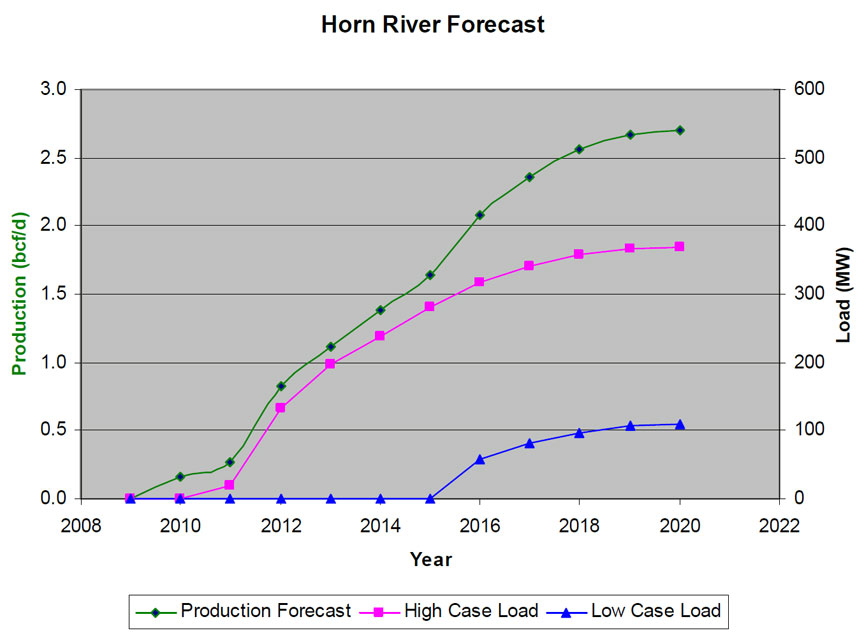
Brad Herald, also responsible for conducting CAPP’s environmental issues, included a graph in his submission entitled Horn River Forecast. The graph indicates that the Horn River Producers Group actually needs 550 megawatts under what is termed “production forecast”. And, as Herald states, Encana’s controversial, and soon to be North America’s largest, Cabin Gas Plant (now under construction on a one kilometer square clearcut or pad) alone would require 120 megawatts upon completion of its six phases of construction - that’s almost the total output of one of the six proposed 150 megawatt turbines for Site C.
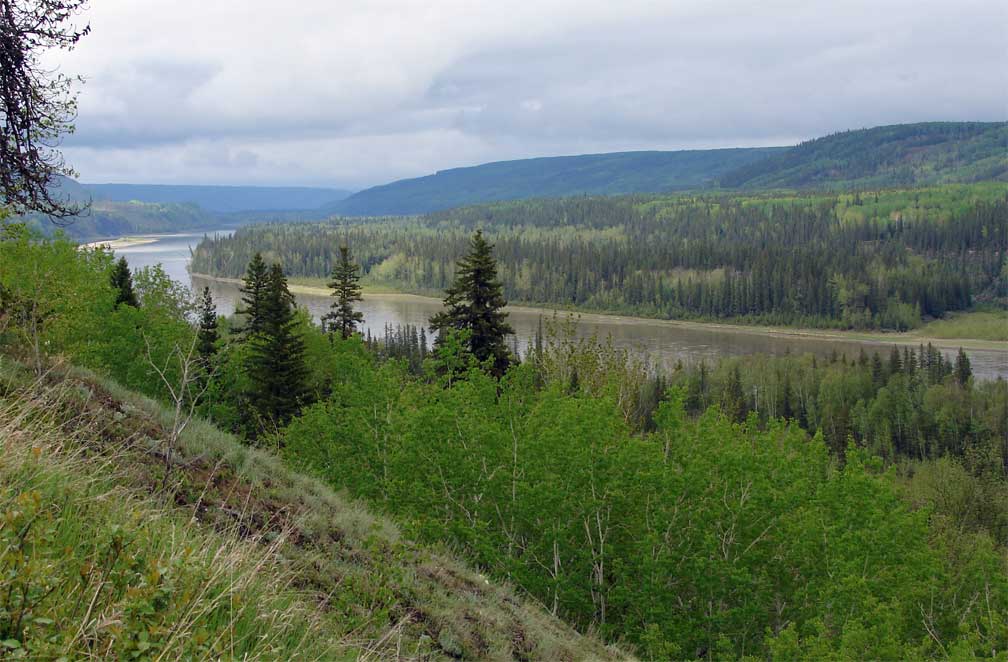
Comments by Senator Richard Neufeld
CAPP’s figure of 550 megawatts in its report to BC Hydro is almost the same figure cited by Canadian Conservative Party Senator Richard Neufeld just over a year later. Neufeld, the former BC Liberal Minister of Energy, Mines and Petroleum Resources appeared before Ft. St. John City Council as a “late delegation” on Monday, February 8, 2010, the day, coincidentally, before the opening of the Second Session of BC’s 39th Parliament in BC’s Capital of Victoria, where Lieutenant Governor Stephen Point announced the BC Liberal’s intention to initiate phase 3 of the Site-C dam proposal. Neufeld encouraged Ft. St. John Council to “get on the train” of Site C for the next phase or stage 3 permitting:
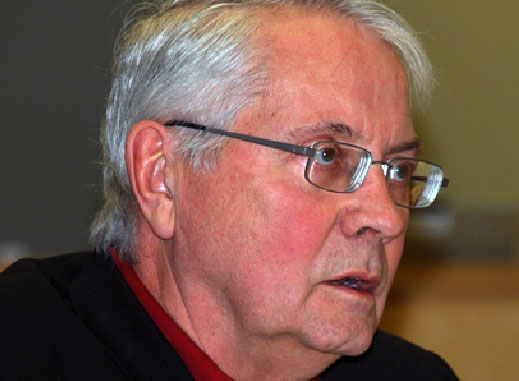
We’ve got a
lot of things in the northeast out of expanded
oil and gas activity, and there should be no reason why we don’t get a
lot of
things out of Site C.... I want to make sure that Ft.
I know that
there has been some
discussion ongoing about the amount of electricity that would be needed
in Fort
Nelson with the advent of the
The
local newspaper,
Neufeld,
re-elected in the
At
the end of June, 2005, Neufeld, while on a trade mission in
A September 15, 2005 Vancouver Sun article, BC Hydro boosts plans to build Controversial Site C dam, leaked new information about an internal B.C. Hydro memo which “suggests that Hydro has decided the project will proceed”, and that the project will “serve the province’s domestic needs”.
Following the new information in the February 9, 2010 Throne Speech, about a new $300 million electricity transmission line to Fort Nelson, and a new $400 million electrical transmission corridor to BC’s northwest (and another transmission line proposal into the Klappan watershed near Iskut), various newspapers began covering the new story about the link between the Horn River Producers and Site-C, some of it with soft investigative, or even supportive, brush strokes.
Michael Sather in the House
On
March 2, 2010, Maple Ridge/Mission riding NDP MLA and Environment
critic
Michael Sather managed to raise the connection between Site C and the
One of the things that has come up, of course, with Site C that I wanted to bring up is coordination — supposedly; it’s certainly being talked about — between Site C power, were it to be developed, and the massive shale gas developments in northeastern British Columbia in the Fort Nelson area.
The potential new transmission line interconnecting Fort Nelson to the British Columbia Transmission Corporation integrated system can be found in B.C. Hydro’s long-term acquisition plan, which says: “B.C. Hydro has requested that BCTC” — British Columbia Transmission Corporation — “complete a planning-level assessment with respect to a new transmission connection between the Peace region and Fort Nelson.” It goes on to say that “new transmission infrastructure will link northeastern B.C. to our integrated grid.”
It goes on
to say that a “new
transmission infrastructure will link northeastern B.C. to our
integrated grid,
provide clean power” — so it says — “to the energy industry and open up
new
capacity for clean power exports to
According
to Michele Rampersad, who
is with Nexen Inc., and Nexen is one of the corporations that’s
planning to
develop the shale gas deposit…. She says: “With the geographical
location of
The oil sands, the single dirtiest source of greenhouse gas emissions in the world — that is what this impetus, this enthusiasm for Site C is driven by, in large measure. It’s not about providing energy for British Columbians. That’s the farce. That’s the doublespeak that this government has in many areas we’ve been asking this government to come clean on what their real intentions are. They don’t do it. There has been greenwashing galore for years from this government. They won’t tell us. They won’t come out and say: “You know what? We want this power for export. We want this power to produce oil from the tar sands.”
That’s okay if the government wants to say that we’re in favour of facilitating the development of the tar sands, but don’t at the same time try to tell British Columbians that your agenda is about clean and green energy. It’s not. So I think it’s really incumbent upon the government to come clean on that.
I expect
the member from the
northeast that spoke earlier may have been at a recent presentation
made by
Sen. Richard Neufeld, who of course was the former Energy Minister in
this
government. On February 8, speaking to the
He said: “I
know that there has
been some discussion ongoing about the amount of electricity that would
be
needed in Fort Nelson with the advent of the
So here you have the former Energy Minister of this government, from that particular area, saying that Site C would use half of that to develop the shale gas deposits to ship the natural gas resource over to the tar sands to develop the tar sands. Sweet but disingenuous, and therein lies the problem.
Sather’s comments were briefly reported on in a few, but isolated, newspapers:
Another Lower Mainland NDP-MLA has weighed in with his views on the Peace River Site-C dam project, putting it under the going-green microscope.
Michael
Sather is the MLA for Maple
Ridge-Mission and he claims most of the new power that would be
generated by
Site C would be destined for the
The Maple
Ridge News says Mr
Sather, the NDP’s deputy environment critic, also contends the natural
gas
would then be pumped to the
Mr. Sather made the accusations this week using statements by former provincial energy minister, and Peace River North MLA Richard Neufeld during his February appearance before Fort St. John City Council.
However,
Liberal MLA Marc Dalton
has again reminded the opposition critic there’s been no final decision
on Site
C and he also reminded him, any use of electricity to develop natural
gas means
it would be going to the oil and gas industry, which pays for social
services
in the Lower Mainland. (MLA says Site C
will power the oil and gas natural industry,
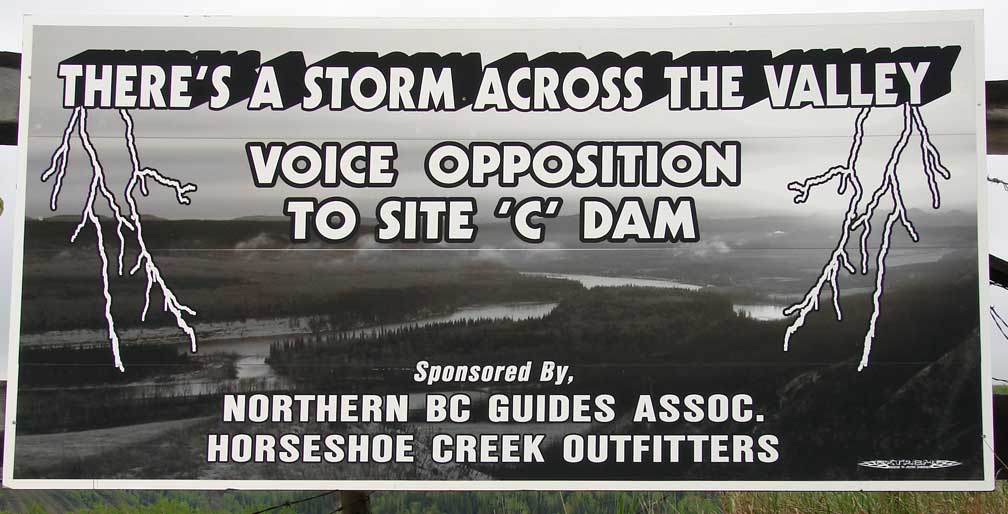
In an April 21, 2010 Province newspaper article, Frustrated First Nations, green groups call foul, West Moberly First Nations Chief Roland Willson lashed out about the plans to use much of Site C for the Horn River Basin Producers Group of gas companies:
The Site C dam is an unnecessary, destructive megaproject that will increase greenhouse gas emissions, not reduce them, critics say.
Premier Gordon Campbell's claim that it will power 410,000 homes is overstated, they add, arguing most of the hydro power generated will go to a future natural-gas extraction plant farther north and much of that natural gas will be exported to Alberta to fire oilsands production.
“People
have been misled about Site
C right from the very beginning,” Chief Roland Willson of the West
Moberly
First Nations told The Province on Monday. “We’ve got lots of power.
This is
not for residential use. It’s going to go to the
More Investigation and Exposure of the Issue Needed
There
has been very little serious or investigative reporting to provide
in-depth
details on the connection between the proposed site C dam power
generation and
the
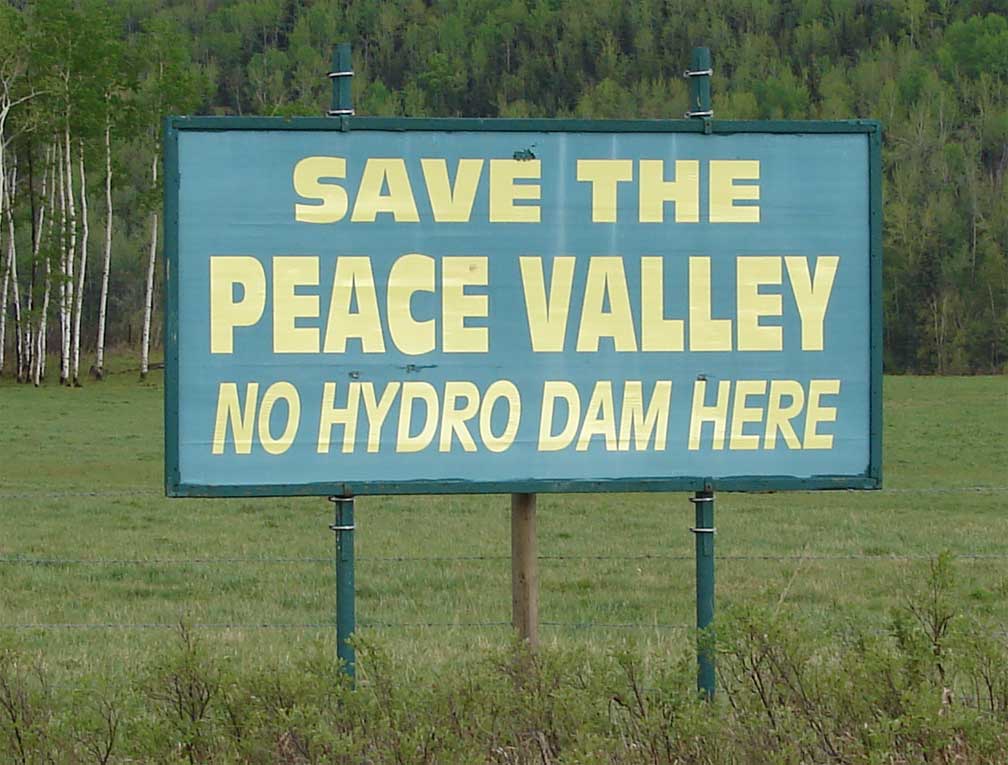 Public
Opposition and Education Groups
Public
Opposition and Education Groups
In
the
· Peace Valley Environment Association, www.peacevalley.ca/
· Keep the Peace Blog, http://keepingthepeace.wordpress.com/
· Keep the Peace, facebook
· Paddle for the Peace, www.paddleforthepeace.ca/
· West Moberley First Nations, www.treaty8.bc.ca/westmoberly.php
· It’s Our Valley, www.itsourvalley.wordpress.com/
· No Site C!, www.nositec.ca/
· Down the River newspaper column, www.site-c-dam.com/